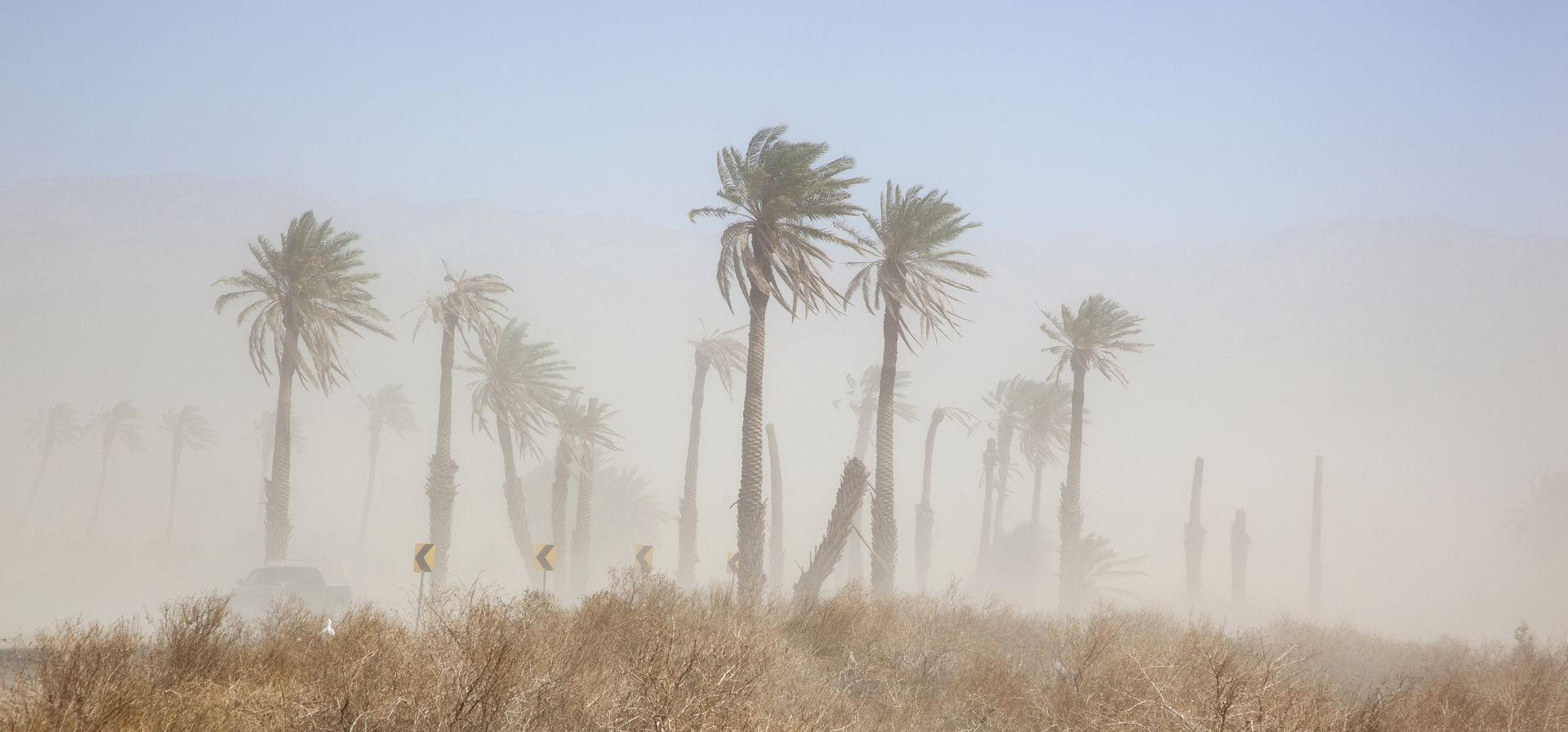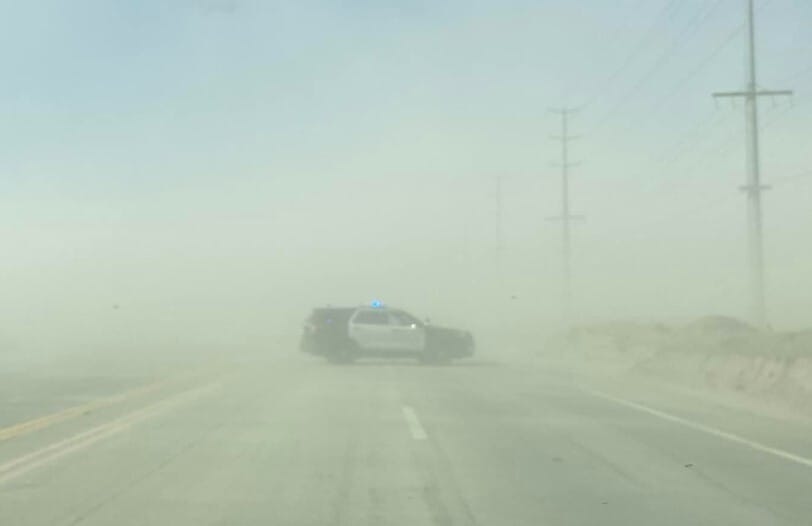Elected officials, scientists, and residents gathered last week in Palm Desert for a regional dust summit in search of answers to the Coachella Valley’s worsening air quality. Instead, the event underscored a sharp divide between data showing improvement and residents’ lived experiences of more frequent and severe dust storms.
The Coachella Valley Dust Summit at UC Riverside’s Palm Desert campus, hosted by the South Coast Air Quality Management District (SCAQMD), drew about 100 participants — half in person, half online — for a three-hour discussion on how dust affects public health and the regional economy.
For many residents, the issue isn’t abstract science but a daily health and safety concern.
“Dust storms have a huge impact on our neighborhood,” said Deiter Crawford, a Desert Highland Gateway Estates resident and longtime community activist. “Twenty percent of the youth in our community have been told they have asthma.”
He said road closures caused by blowing dust at Gene Autry Trail and Indian Canyon Drive also delay commutes and emergency response times — economic and safety impacts that compound health risks.
Both roads are finally getting solutions, with construction underway on a wind wall at Gene Autry Trail and a bridge project in the works for Indian Canyon Drive.
While residents described the dust they see and feel, air quality experts outlined the science behind it.
Scott Epstein, an air quality specialist with SCAQMD, explained that experts track particulate matter — including PM2.5, the fine particles that penetrate deep into the lungs, and PM10, larger particles commonly linked to wind-blown dust and construction.

A vehicle is barely visible as sand is kicked into the air during a wind event in the Coachella Valley. (Image: Shutterstock)
Data from three valley monitoring stations showed PM2.5 levels largely below federal standards, except for a brief spike following Hurricane Hilary in 2023. PM10 levels, while still exceeding standards on some days, have generally declined since tracking began in 1989.
Epstein said CVAG is working to install more temporary sensors in more locations throughout the Coachella Valley, and acknowledged discrepancies in data from the Indio sensor after it had to move locations.
To connect that data about dust particles to health, Aviva Goldmann, an epidemiologist with Riverside University Health System, referred to a graph of emergency room visits at the three valley hospitals.
“The frustration level is increasing for all of us who live in this great Coachella Valley, and we simply want to get some action taken.”
Her data showed a slight decrease in ER visits related to air quality issues, but she qualified that conclusion by acknowledging that she can’t detect anything that doesn’t lead to a medical encounter.
“Pharmacy data … could show when people are seeking relief for symptoms that do not lead to medical encounters, but we have to pay for that,” she said.
Yet residents’ accounts of worsening health contrast with the numbers.
Community advocate Lillian Garcia countered that many affected families in North Shore don’t appear in those statistics because they seek treatment across the border in Mexicali.

Low visibility due to dust blowing across Gene Autry Trail in Palm Springs causes frequent road closures in Palm Springs.
Indian Wells Councilmember and Coachella Valley Clean Air founder Toper Taylor said urgent care data tells a different story — one of rising respiratory issues — and expressed frustration with the gaps in official monitoring.
Taylor said the SCAQMD and other governing bodies have been ineffectual, and pointed out that even during the summit answers from elected officials like Riverside County Supervisor V. Manuel Perez have been unclear and unsatisfactory.
“The frustration level is increasing for all of us who live in this great Coachella Valley, and we simply want to get some action taken,” Taylor concluded.
Sarah Rees, SCAQMD’s deputy executive officer for planning and development, acknowledged the data gaps and said the district recently approved $3.1 million for additional monitoring to capture localized events.
“When you have these [wind] events, sometimes Cathedral City is just completely socked in and three miles away it’s clear.” she said. “And so [we are] wanting to really get that granularity and that distinction.”

Panelists, including Riverside County Supervisor V. Manuel Perez (far left), speak at a dust summit that attracted roughly 100 people in person and online.
Panelists identified some solutions that are used for small scale private situations like chemical stabilizers for dust and fences at construction sites.
Perez closed the summit by agreeing with the public’s impatience.
“I’m tired of studies too and I’m tired of seeing the [Salton Sea] shoreline dust impacting our communities,” he said. “I don’t have any excuse or any reason per se as to … why it’s taking this long. I know it has, and I agree it is painful. I’m in the trenches as a policy maker, but I also live in the area, I grew up here.”
He urged officials to prioritize short-term, tangible mitigation steps while continuing longer-term efforts to control dust across the valley.

